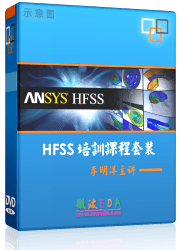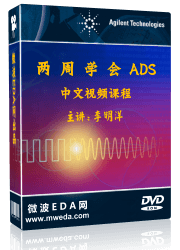|
 Ansoft Designer / Ansys Designer 在线帮助文档: Ansoft Designer / Ansys Designer 在线帮助文档:
Terms in Designer >
Glossary: L
Glossary: L
Laminate
A material constructed from thin layers or sheets.
Often used in the substrate of circuit boards.
Laser Diode
A special semiconductor diode which emits a beam of
coherent light.
Latch-Up Condition
A condition in which a circuit draws uncontrolled
amounts of current, and certain voltages are forced, or "latched-up",
to some level. Particularly relevant in the case of CMOS devices which
can latch-up if their operating conditions are violated.
Lateral Thermal Conductivity
Good lateral thermal conductivity means that the heat
generated by components mounted on a substrate can be conducted horizontally
across the substrate and out through its leads.
Layers (and Stackup)
Layers are used in the layout editor to organize and
isolate sets of geometry or other visual indicators. Signal, Metallized
signal, and Dielectric are common physical layers, while Symbol (to
show component symbols in layout), Error, and Ratsnest (to show connectivity)
are non-physical layers. The stackup contains additional properties
of the physical layers, such as material, thickness, and elevation.
Geometrical information on these layers is used to generate masks for
manufacturing.
LDMOS
Laterally-diffused metal oxide semiconductor.
Lead
(1)A metallic element (chemical symbol Pb). (2)A metal
conductor used to provide a connection from the inside of a device package
to the outside world for soldering or other mounting techniques. Leads
are also commonly called pins.
Lead Frame
A metallic frame containing leads and a base to which
an unpackaged integrated circuit is attached. After encapsulation, the
outer part of the frame is cut away and the leads are bent into the
required shapes.
Level-Sensitive
An input whose effect on a function depends only on
its current logic value or level, and is not directly related to it
transitioning from one logic value to another.
LFSR (Linear Feedback Shift Register)
A shift register whose data input is generated as
an XOR or XNOR of two or more elements in the register chain.
Library
A library is a collection of one or more components
or component dependencies (materials, symbols, footprints, or padstacks)
stored in a container file. A library must be configured to a circuit
before use, either by the user (manually) or by loading technology files
(automatically). System libraries are provided with Designer. User libraries
and Personal libraries are used to add foundry support, user defined
models, and any custom set of components or simulation models. See the
Library Overview topic for more information.
LIFO (Last-In First-Out)
A memory device in which data is read out in the reverse
order to which it was written in.
LIFO (Last-In First Out)
A memory device in which data is read out in the reverse
order to which it was written in.
Limiting Level
The input power level when the output power is goes
into compression and no longer becomes linear.
Line
Used to refer to the width of a track; for example,
"This track has a line-width of 0.12mm."
Linearity
Describes how closely an output signal is to a perfectly-scaled
multiple of a corresponding input signal.
Load Pull
Automated measurement of RF performance of a device
under test (at a constant frequency) by varying the source and load
impedance presented to the device
Logic Function
A mathematical function that performs a digital operation
on digital data and returns a digital value.
Logic Gate
The physical implementation of a logic function.
Logic Synthesis
A process in which a program is used to optimize the
logic used to implement a design.
Low-Fired Cofired
Similar in principle to standard cofired ceramic substrate
techniques. However, low-fired cofired uses modern ceramic materials
with compositions that allow them to be fired at temperatures as low
as 650oC to 750oC. Firing at these temperatures in an inert atmosphere
such as nitrogen allows non-refractory metals such as copper to be used
to create tracks.
LSI (Large-Scale Integration)
Refers to the number of logic gates in a device. By
one convention, large-scale integration represents a device containing
100 to 999 gates.
LSI (Large-Scale Integration)
Refers to the number of logic gates in a device. By
one convention, large-scale integration represents a device containing
100 to 999 gates.
LTH (Lead Through-Hole)
A technique for populating circuit boards in which
component leads are inserted into plated through-holes. Often abbreviated
to "through-hole" or "thru-hole". When all of the components have been
inserted, they are soldered to the board, usually using a wave soldering
technique.




HFSS视频教程
ADS视频教程
CST视频教程
Ansoft Designer 中文教程
|